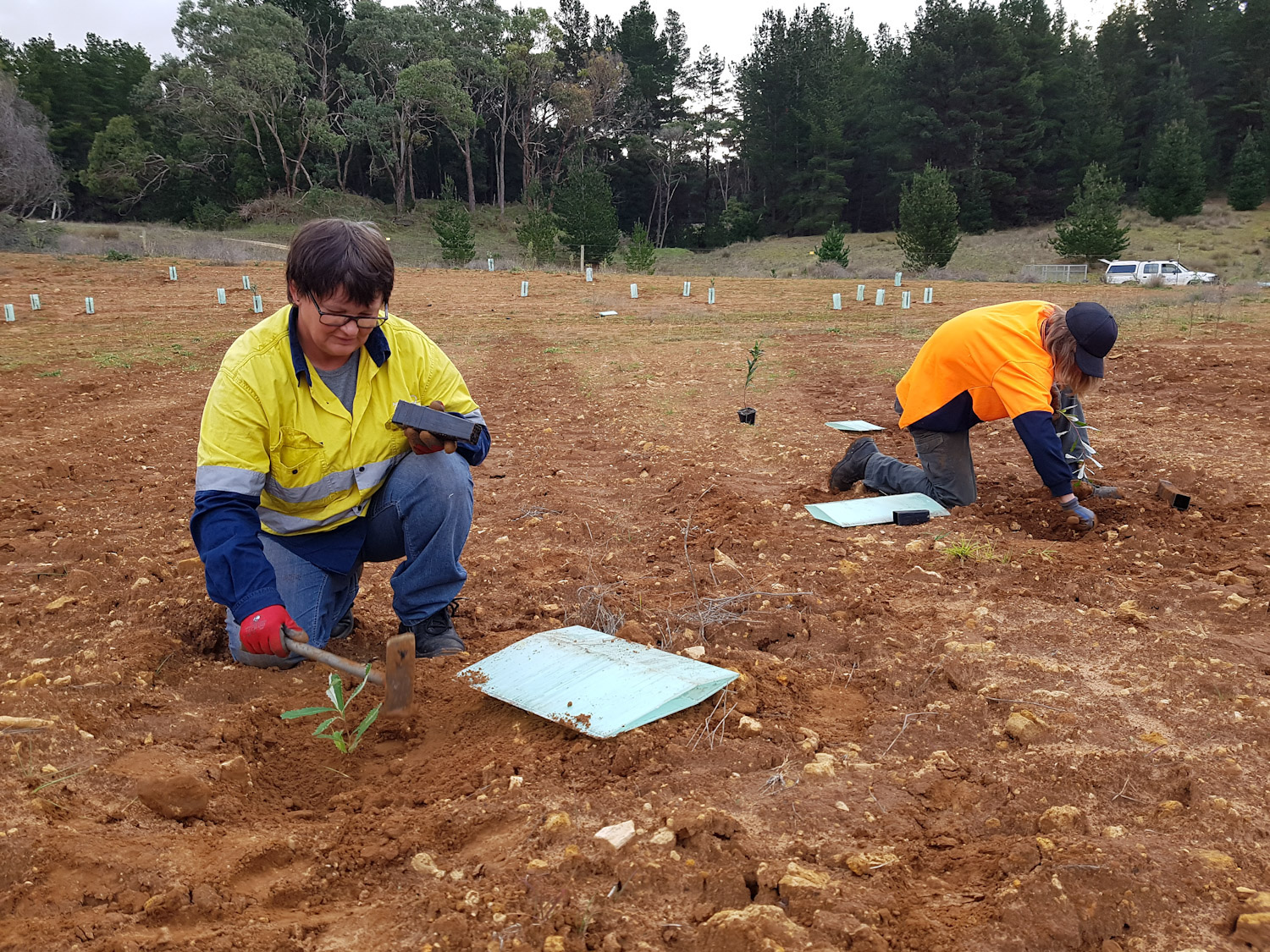NGT Bushcare is bringing native vegetation back to retired quarries
Down in the South East of SA, we’re all about the limestone. As well as being the key ingredient in many of our landforms and resulting in spectacular karst formations, its presence at varying depths and densities drives the composition of much of the native vegetation we see around us. It’s also a key resource for local industry, including building and roading materials.
Over the past year or so, NGT has helped OneFortyOne with the rehabilitation of parts of old limestone quarry sites that have given up their useful rock. At that stage, they’re partially filled – the removed overburden (or topsoil), if it hasn’t been removed from the site, is shaped over the top in a reasonably natural form. The site is revegetated to bring back native vegetation and stabilise the soils.
Soils are typically nutrient-poor crushed limestone mixed with some loam, and includes large sections of solid rock that occasionally need to be ripped before planting occurs.

A particularly shallow and hard patch of limestone is ripped before planting (above), and the prepared ground (below), waiting for a few episodes of rain before plants go in.
It needs to be a pretty hardy plant that will take on these conditions, and only limestone-loving species need apply – one of the most prominent being the gritty, stately Drooping She-oak (Allocasuarina verticillata). The She-oak often amazes by growing in the most unforgiving locations – think limestone rises with only a centimetre or two of soil, a sheer Glenelg River cliff, or a jumble of volcanic rock. If there’s a crack, they’ll find it and they don’t ask much in the way of nutrients or water. However, roos, rabbits and other browsing animals love the young plants, so guarding is essential to protect the young She-oaks until they’re around head high.
Other limestone species planted included Dryland Tea-tree (Melaleuca lanceolata), Golden Wattle (Acacia pycnantha) and Sweet Bursaria (Bursaria spinosa) along with a range of trees, shrubs and hardy tussocks and herbs. The plants that went in last year have gone fairly well despite a dry summer and the She-oaks have shown fast growth.

NGT’s Sheryl and Dale starting a patch of Silver Banksia (Banksia marginata) in some slightly loamier soil.
Some of these sites are in close proximity to other native bushland so these small restoration efforts will help expand these existing patches. In other more isolated spots, we hope these quarry revegetation sites provide a stepping stone between reserves and other native vegetation.

